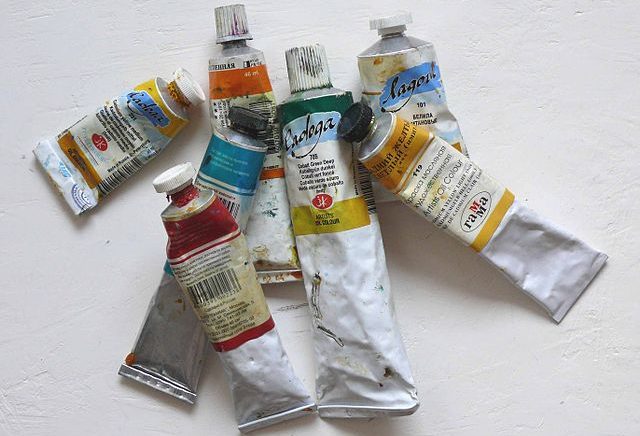How Did Oil Paint Change the Renaissance?
October 13, 2022
Stepping away from the Dark Ages, the Renaissance was a period of independent thought and seeing the world through reason rather than superstition. In realizing that there is more to life on earth other than a potential afterlife, the human understanding in mathematics, science, philosophy, economy, and most importantly, art, flourished. However, the symbolic and magnificent Renaissance paintings would not have existed without the invention of oil paint.
Oil paint was invented in the 12th century in Northern Europe but did not gain traction until the 15th century. When painter Jan Van Eyck decided to step away from painting with tempera paint, made of pigment and egg yolks, he became one of the first painters to use oil paint. Rather than mixing the pigments with egg yolks, the oil paint in turn is mixed with linseed oil.
The main difference between tempera and oil paint is that oil paint dries much slower, allowing time for the artist to paint fine details and providing a broader range of colors. Moreover, oil paint itself, without adding titanium or zinc white, is translucent, meaning that a painting could be built up with many thin layers of transparent pigment. This technique is known as glazing; some famous glazed paintings include Arnolfini Portrait by Jan Van Eyck and Virgin and Child with Saints Catherine of Alexandria and Barbara by Hans Memling.
The new medium spread feverishly among painters in the Renaissance as people were impressed by the flexibility of oil paint. To elaborate, painters often had to paint harsh strokes to create darker tones using egg tempera because the medium dries fast and dull in color. However, using oil paint, painters have lots of time before it dries to blend the colors around and create a softer, smoother tone. As a result, people began to praise paintings that are natural and closely resemble real life, giving rise to the art style of realism. Painters who adopted this style of painting include Michelangelo, Leonardo da Vinci, and Rafael.
“Some paintings of the Renaissance are even more realistic than photographs; certain details can only be captured by the hands of the artist and not a camera,” said AHS freshman Han Phan.
Not only was the Renaissance a revival of the ancient Roman and Greek glory, but it was also a time of discovery and innovation. The adoption of oil paint marked a new era for painters in the Renaissance as it allowed room for perspective, creativity, and depth. As a result, it gave rise to famous painters and new art styles.
Even today, oil painting techniques from the Renaissance are still being taught to students in art studios, such as ArtCenter College of Design and Otis College of Art and Design. Some famous modern-day oil painters include Alyssa Monks, Conner Walton, and Gregory Mortenson.
“I take oil painting classes every week; it is interesting to see the world through the perspective of a Renaissance painter, where everything can be broken down into simple shapes, perspective, and tone,” said Arcadia High School (AHS) Freshman Alice Wang.
The spread of oil paint remains to be one of the greatest achievements of the Renaissance, leaving a lasting impact on the history of art.
Photo Courtesy of WIKIMEDIA COMMONS

